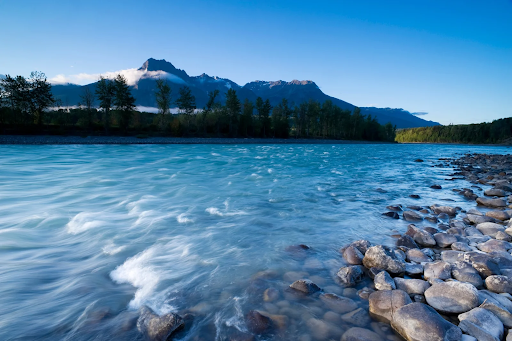
Skeena River, BC
Flowing from the coastal mountains to the Pacific Ocean, the Skeena River is not only one of British Columbia’s great waterways, but it’s also a corridor of living history and deep cultural connection. Known as the “River of Mists,” the Skeena has long been the lifeblood of the Indigenous Nations who have lived along its banks for millennia. Today, Highway 16 follows much of its path, leading travellers through awe-inspiring landscapes, historic villages, and cultural landmarks that tell the story of the region’s enduring spirit and creativity.
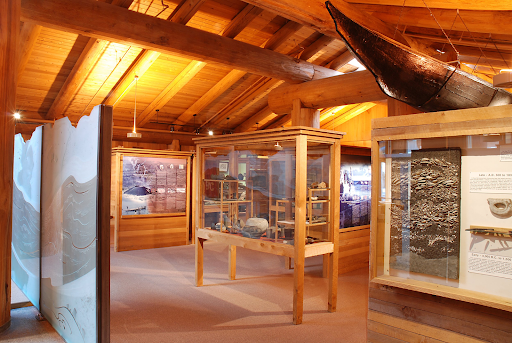
Museum of Northern BC
At the mouth of the Skeena River in Prince Rupert, the Museum of Northern BC stands as a gateway to the region’s cultural heritage. Housed in a striking cedar longhouse overlooking the harbour, the museum is internationally recognized for its exceptional collection and immersive exhibits. Visitors can explore artifacts and stories that span thousands of years, from the lifeways of the coastal First Nations to the maritime and industrial development that shaped the North Coast. The museum serves as both a starting and ending point for any journey along the Skeena River Cultural Corridor, grounding travellers in the depth and diversity of Northern BC’s past and present.
Nearby, the North Pacific Cannery National Historic Site, BC’s oldest surviving salmon cannery offers a glimpse into one of the province’s most significant early industries. Built in 1889, this waterfront site preserves original buildings, tools, and living quarters through guided tours and exhibits that reveal how the fishing and canning trade shaped the cultural and economic identity of coastal communities.
Up river is the lively, creative community of Terrace, rooted in the settler/immigrant history of the late 1800s. Discover a time past in the Heritage Park and the George Little House. Each summer, Riverboat Days Festival commemorates the sternwheelers linking Terrace with the coast.
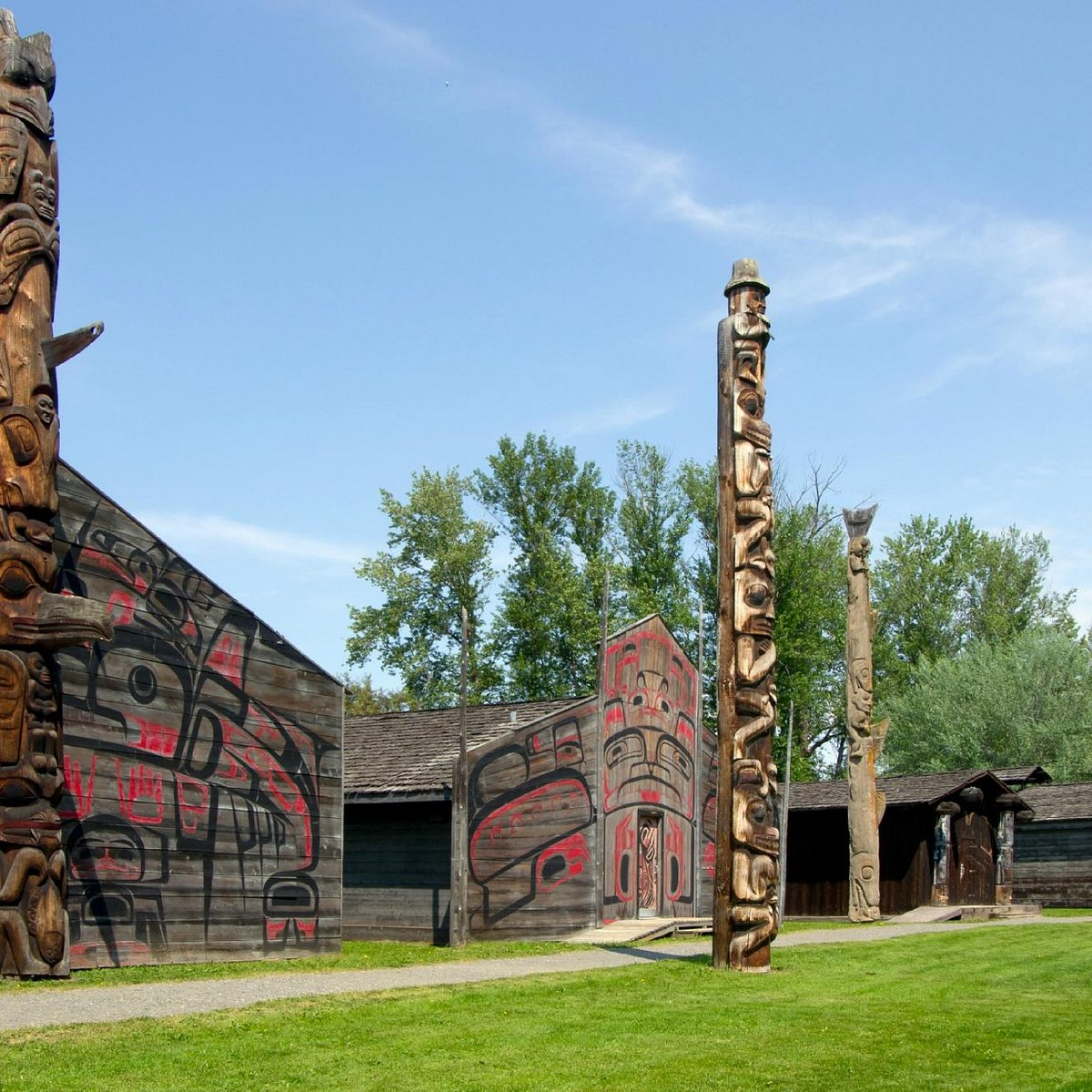
Ksan Historical Village & Museum
In the 1800s, Europeans worked their way up the Skeena River to Gitanmaax, now known as Hazelton, where the Gitxsan people lived between the junction of the Skeena and Bulkley rivers. Today, the Ksan Historical Village & Museum stands on that spot, a recreated Gitxsan village. Seven longhouses, the first built in 1959, replicate a community inhabiting here for hundreds of years. The historical village has gathered a large, diverse collection from the region, consisting of both ceremonial and utilitarian items, illustrating the vibrant culture of the Gitxsan.
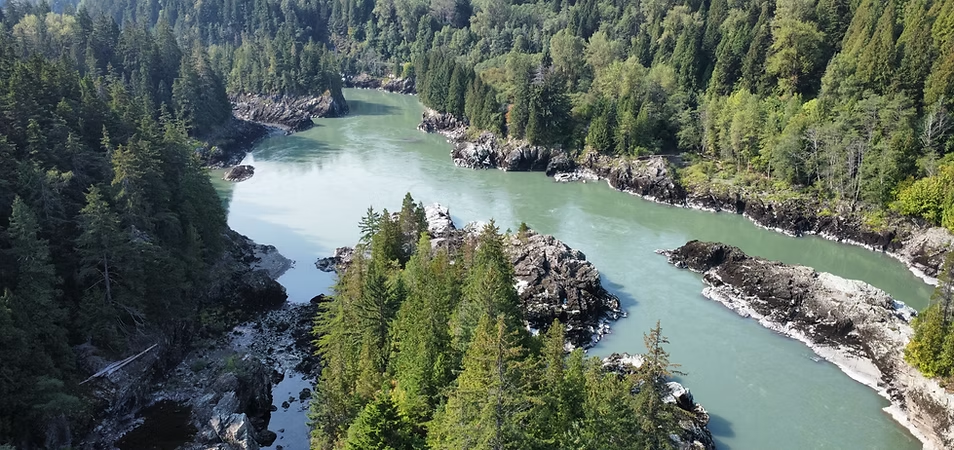
Kitselas Canyon, BC
Just ten minutes upriver from Terrace sits Kitselas Canyon, a National Historic Site of Canada that has been an important cultural and spiritual place for the Gitselasu people of the Ts’msyen Nation for over 6,000 years. The canyon’s soaring rock outcroppings rise high above the Skeena River, forming a natural stronghold that once allowed the Gitselasu to control trade between the coast and the interior.
During the 19th century, the Skeena River became a vital transportation and trade route. The strategic location of the ancestral villages of Gitseax and Gitlaxdzawk, both situated in the canyon, made them central to the region’s economic network—first among Indigenous Nations and later with European traders, including the Hudson’s Bay Company.
Although the historic villages no longer stand, the area remains rich with archaeological evidence. The 70-hectare site holds traces of the Gitselasu’s long presence, including culturally modified trees, forest gardens, caches, artifacts, and below-ground remains that reveal centuries of life along the river.
Designated a National Historic Site in 1972, Kitselas Canyon features four interpretive longhouses that share the stories of the Gitselasu people, along with a scenic Canyon Trail lined with modern-day clan poles. The trail leads to a breathtaking viewing platform overlooking the canyon, where visitors can feel the enduring connection between culture, land, and river.
Nearby on Highway 37 are the Gitxsan villages of Gitwangak (Kitwanga) and Gitantanyow (Kitncool), home to the largest groupings of totem poles in the Northwest. Many originals, some replicas; a few immortalized by Emily Carr, a renowned 1900s BC artist, such as the “Hole in the Sky” pole. An invaluable resource to the over 50 poles in the upper Skeena is the Hands of History Tour. Brochures can be picked up at the Visitor Centre in Terrace and Hazleton.
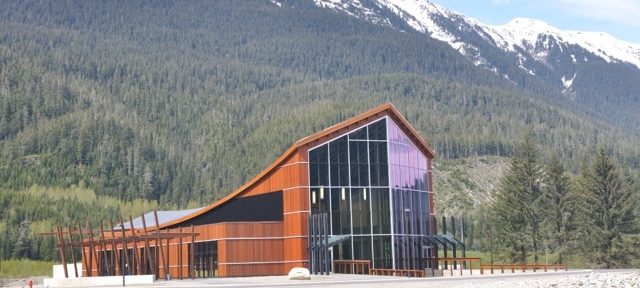
Nisga’a Museum
For those continuing northwest beyond Terrace along Highway 113, the Nisga’a Museum in Lax̱galts’ap offers a profound look into one of BC’s most powerful cultural legacies. The museum, known as Hli Goothl Wilp-Adokshl Nisga’a (“the Heart of Nisga’a House Crests”), is an architectural masterpiece inspired by traditional Nisga’a longhouses. Inside, an extraordinary collection of repatriated artifacts, once scattered across international museums, has returned home, allowing visitors to experience the Nisga’a Nation’s stories of creation, survival, and renewal through art, regalia, and oral history.
Surrounded by volcanic landscapes and serene rivers, a visit to the Nisga’a Museum offers a moving conclusion to a journey through the Skeena River Cultural Corridor—a place where art, history, and nature are forever intertwined.
A short drive south from Terrace along Highway 37 brings travellers to Kitimat, a coastal community framed by fjords and forests at the head of Douglas Channel. Here, the Kitimat Museum & Archives showcases the community’s unique story, from its beginnings as a planned industrial town in the 1950s to its ongoing evolution as a centre for energy, trade, and outdoor exploration.
The museum’s exhibits delve into local Indigenous heritage, pioneer history, and the transformative projects that helped shape modern Northern BC. Combined with nearby nature trails and waterfront views, Kitimat offers a rewarding cultural side trip that complements the broader journey along the Skeena.
Travelling the Skeena River Cultural Corridor is more than a scenic journey; it’s an immersion into the living heritage of Northern BC. Each community along Highway 16 tells a story, from the carved poles of the Gitxsan and Nisga’a Nations to the preserved canneries and historic towns that shaped the region’s identity. Together, they create a powerful narrative of connection between land, culture, and creativity. Whether you begin at the coast in Prince Rupert or deep inland near Hazelton, the Skeena invites you to follow its currents through time, discovering the art, history, and spirit that continue to define this remarkable part of British Columbia.






